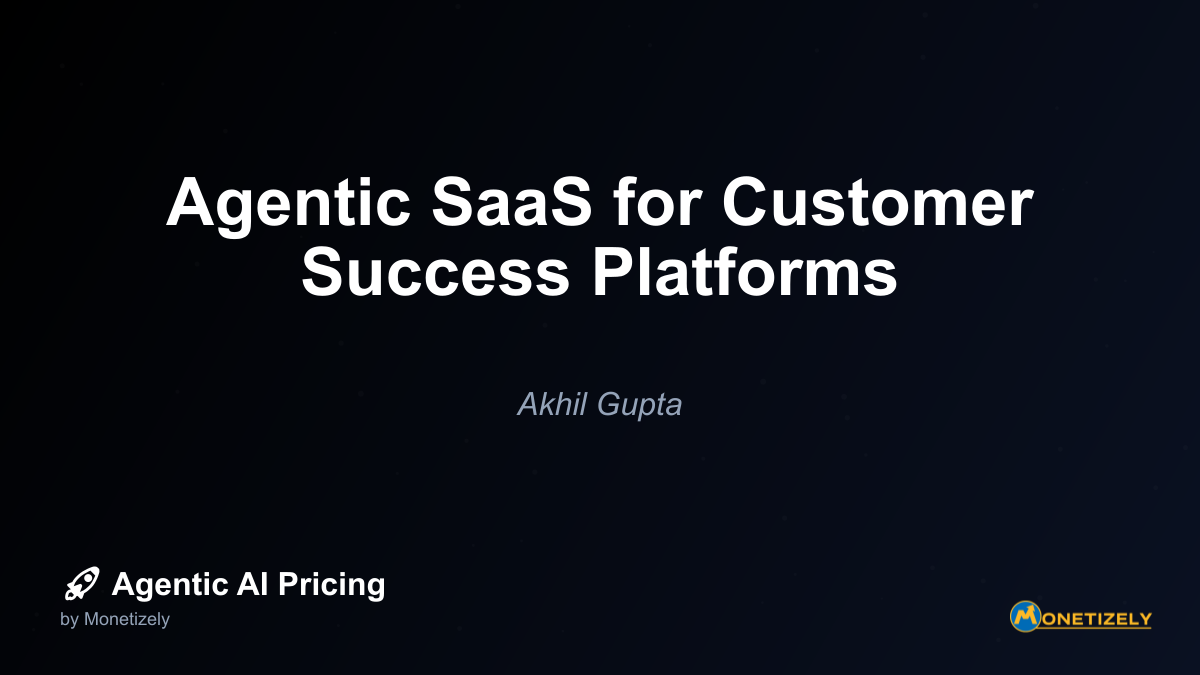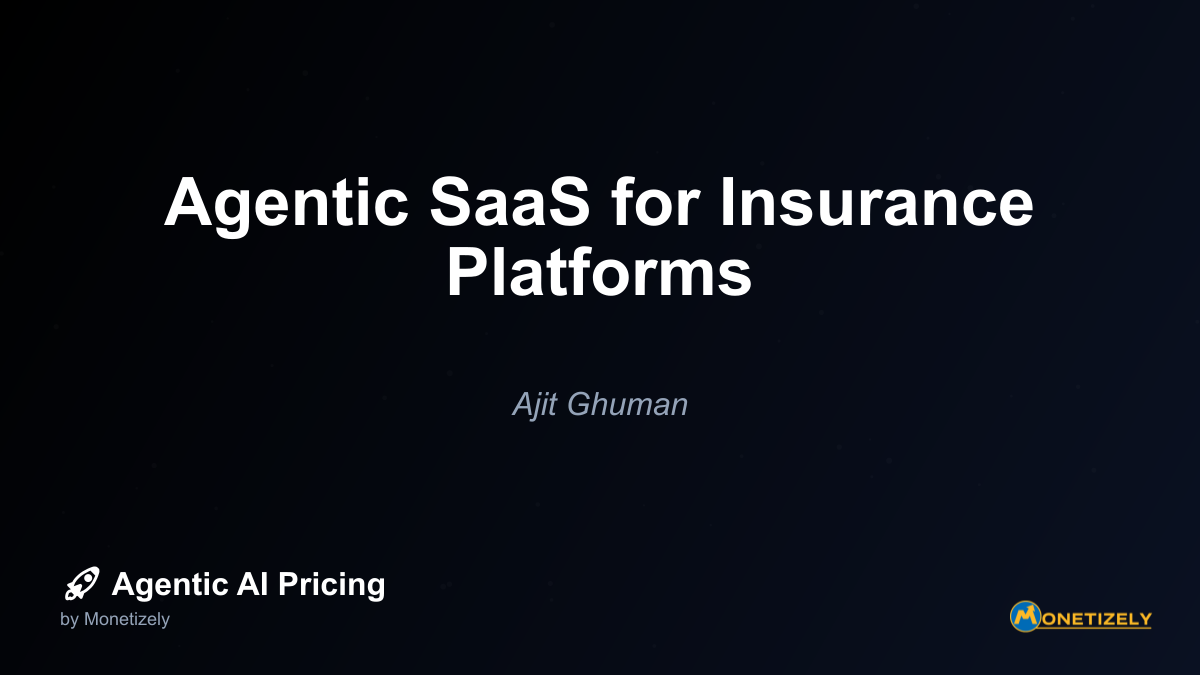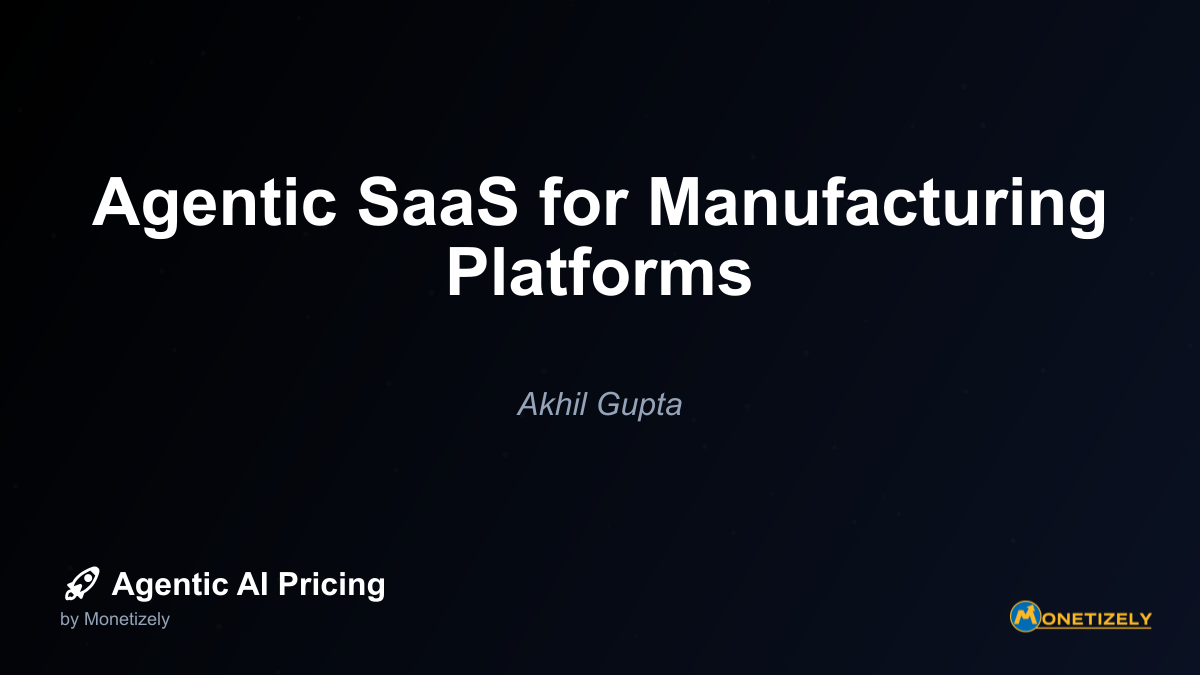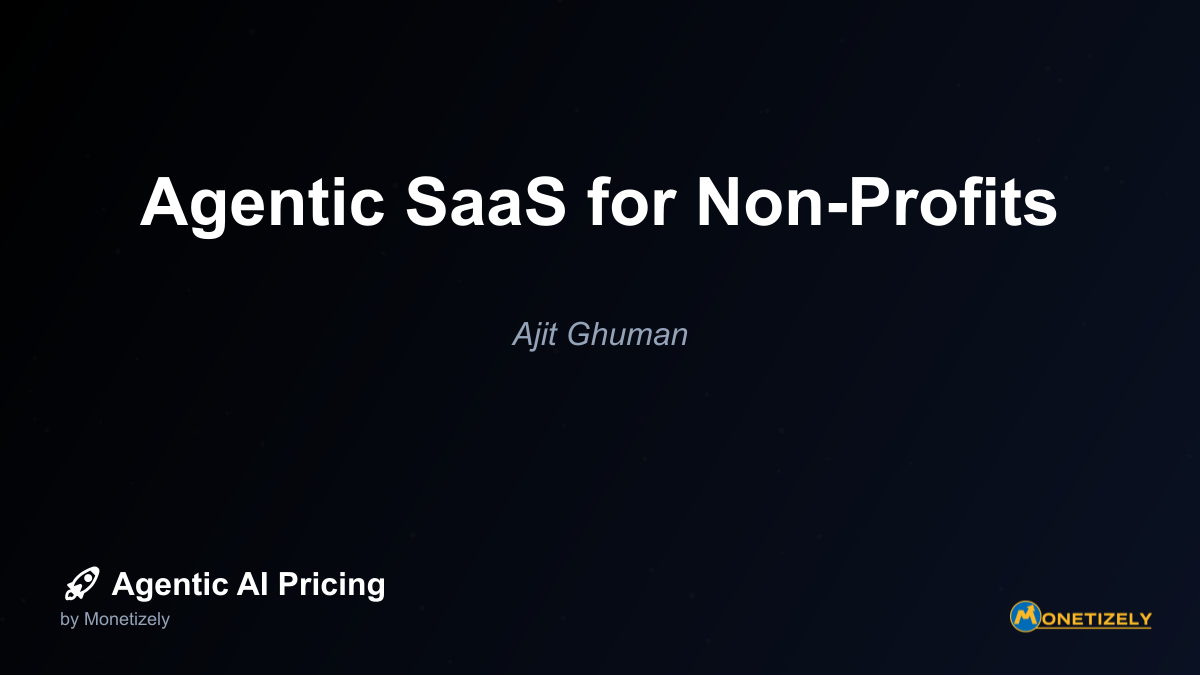· Akhil Gupta · Vertical Applications · 7 min read
Agentic SaaS in Agriculture Tech
AI and SaaS Pricing Masterclass
Learn the art of strategic pricing directly from industry experts. Our comprehensive course provides frameworks and methodologies for optimizing your pricing strategy in the evolving AI landscape. Earn a professional certification that can be imported directly to your LinkedIn profile.
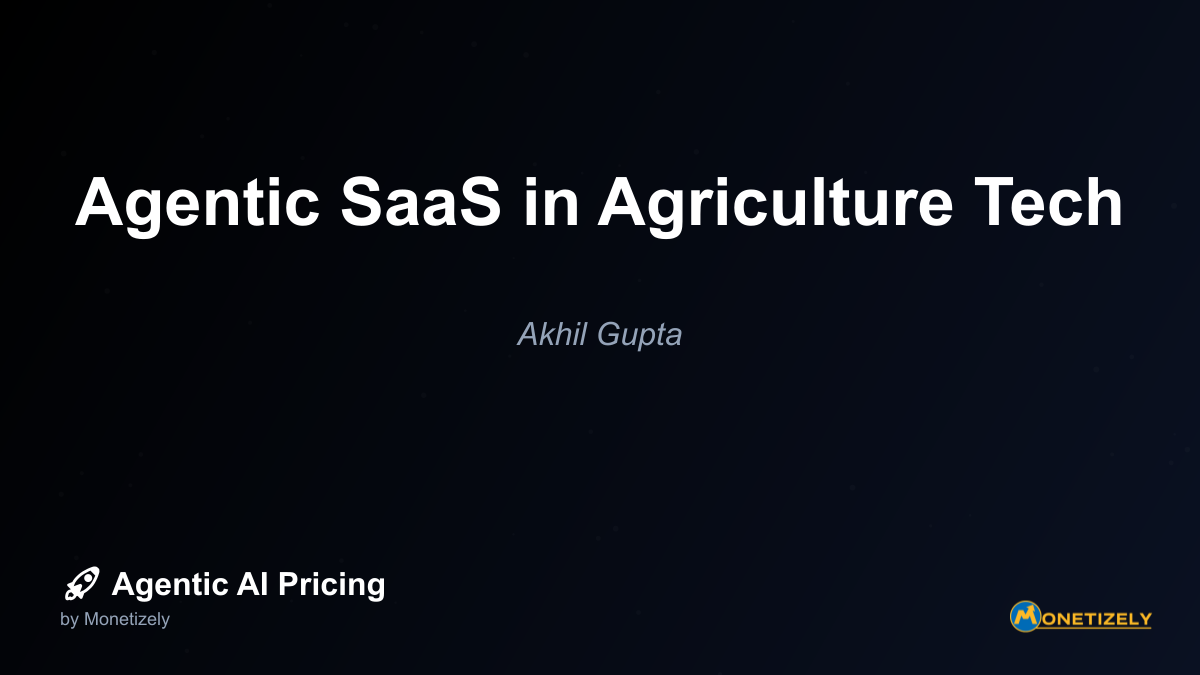
Agricultural agentic SaaS platforms employ several pricing models, each with distinct advantages for different farm operations. As discussed in our article on reevaluating pricing models as agricultural yields improve, the right approach often depends on farm size, crop type, and technological maturity.
Acreage-Based Pricing
The most straightforward model scales pricing based on the land area being managed:
- Tiered acreage bands with decreasing per-acre rates at larger scales
- Crop-specific variations that reflect different management intensities
- Feature-based tiers within acreage bands for flexibility
This model aligns well with farmers’ understanding of per-acre economics and scales naturally with operation size.
Outcome-Based Pricing
Increasingly popular, outcome-based models tie costs directly to results:
- Yield improvement percentages compared to historical or regional averages
- Resource reduction metrics for water, fertilizer, or pesticide savings
- Quality premium attainment for crops meeting specific standards
- Risk-sharing arrangements with partial refunds for underperformance
These models build confidence by aligning vendor and farmer incentives, though they require robust baseline measurements and clear attribution methodologies.
Tiered Subscription Models
Feature-based tiers allow farmers to select appropriate capability levels:
- Basic monitoring for entry-level digital agriculture adoption
- Advanced analytics adding predictive capabilities and recommendations
- Full automation enabling autonomous decision-making and execution
- Enterprise integration connecting farm operations with supply chain partners
This approach creates natural upgrade paths as farmers become more comfortable with agentic technologies and seek additional capabilities.
Usage-Based Components
Some agricultural SaaS platforms incorporate usage elements:
- API call volumes for integration with other farm systems
- Processing fees for specialized analytics like disease identification
- Storage costs for historical imagery and sensor data
- Report generation for regulatory compliance documentation
Usage components can complement base subscriptions to accommodate seasonal intensity variations in agricultural operations.
Implementation Challenges and Solutions
Connectivity Limitations
Rural broadband access remains a significant barrier to agentic agriculture adoption:
- Edge computing architectures that process data locally before transmission
- Asynchronous operation modes functioning during connectivity gaps
- Bandwidth optimization through selective data transmission
- Offline capabilities for critical functions during outages
Solution providers increasingly design for the connectivity realities of rural environments rather than assuming constant high-speed connections.
Integration with Legacy Equipment
Most farms operate mixed fleets of equipment spanning multiple generations:
- Retrofit kits adding sensors and control systems to older machinery
- Gateway devices bridging proprietary equipment protocols
- Progressive automation paths starting with monitoring before control
- Hybrid operation modes blending autonomous and manual processes
Successful agentic platforms accommodate this heterogeneity rather than requiring complete fleet modernization.
Skills and Training Gaps
The technological sophistication of agentic systems can outpace farmer capabilities:
- Simplified user interfaces masking underlying complexity
- Virtual training environments for risk-free experimentation
- Graduated autonomy levels allowing incremental adoption
- Community support networks connecting experienced and new users
Vendors increasingly recognize that technology adoption depends as much on human factors as technical capabilities.
Data Ownership and Privacy
Farm data has significant value, raising concerns about ownership and control:
- Transparent data policies clarifying usage rights and limitations
- Localized data storage options for sensitive information
- Anonymization protocols for aggregated analytics
- Farmer-controlled sharing with advisors and supply chain partners
Trust frameworks are emerging that balance individual farm privacy with collective benefits from aggregated insights.
The Future of Agentic SaaS in Agriculture
Ecosystem Integration
Future agricultural agents will increasingly operate within broader ecosystems:
- Cross-platform data exchange between complementary systems
- Equipment-agnostic operation across manufacturer boundaries
- Supply chain integration from input suppliers to processors
- Financial services connections for insurance and lending
These integrations will create comprehensive digital agriculture environments where multiple agents collaborate to optimize entire agricultural systems.
Advanced Decision Intelligence
Next-generation agricultural agents will employ increasingly sophisticated decision processes:
- Scenario planning evaluating multiple intervention options
- Multi-objective optimization balancing yield, quality, and sustainability
- Long-term consequence modeling for soil health and ecosystem impacts
- Adaptive management adjusting strategies based on emerging conditions
These capabilities will transform agents from tactical tools to strategic partners in farm management.
Human-Agent Collaboration Models
The relationship between farmers and agents will evolve toward true collaboration:
- Explanation interfaces helping farmers understand agent reasoning
- Preference learning adapting to individual risk tolerances and priorities
- Suggestion modes offering options rather than directives
- Knowledge transfer helping farmers develop their expertise alongside agents
This evolution recognizes that optimal outcomes come from combining human wisdom with computational capabilities.
Regulatory Adaptation
As agentic systems become more autonomous, regulatory frameworks will evolve:
- Certification standards for agricultural AI safety and efficacy
- Audit trails documenting agent decisions for compliance
- Responsibility frameworks clarifying liability for autonomous actions
- Cross-border data governance addressing international operations
Forward-thinking vendors are engaging proactively with regulators to shape these emerging frameworks.
Case Studies: Agentic SaaS in Action
Large-Scale Row Crop Management
A 5,000-acre corn and soybean operation in the U.S. Midwest implemented an integrated agentic platform with:
- Autonomous irrigation management reducing water usage by 22%
- Predictive pest modeling decreasing pesticide applications by 35%
- Variable-rate fertilization optimizing nutrient placement
- Harvest logistics coordination reducing equipment idle time
The operation reported a 7% yield increase and 15% input cost reduction within two growing seasons, with ROI achieved in 18 months.
Specialty Crop Precision
A 200-acre specialty vegetable farm in California adopted an agentic system focused on:
- Microclimate monitoring with dense sensor networks
- Labor task optimization coordinating harvest crews
- Quality prediction for harvest timing decisions
- Irrigation micro-management at individual plant level
The farm achieved premium pricing on 40% more of its produce through improved quality consistency, with particular success in reducing water-related quality defects.
Livestock Integration
A diversified operation with crops and livestock implemented an integrated agentic platform:
- Feed production optimization aligning with animal nutritional needs
- Grazing management coordinating rotational patterns
- Manure application planning for optimal nutrient cycling
- Integrated financial modeling across production systems
This systems approach improved whole-farm profitability by 12% while reducing purchased input requirements by 28%.
Implementation Roadmap for Farm Operations
Assessment Phase
Successful adoption begins with thorough evaluation:
- Current state analysis documenting existing processes and pain points
- Data inventory identifying available and missing information sources
- Connectivity assessment mapping farm network coverage and limitations
- Equipment compatibility review determining integration possibilities
- ROI modeling for potential implementation scenarios
This foundation ensures technology selection aligns with specific farm needs and capabilities.
Pilot Implementation
Starting with contained pilot projects reduces risk:
- Single field or enterprise for initial deployment
- Parallel operation alongside conventional methods for comparison
- Focused objectives targeting specific high-value improvements
- Intensive monitoring of both system performance and outcomes
- Regular review cycles with vendor support
Successful pilots build confidence and organizational learning before broader deployment.
Scaled Adoption
Expansion beyond pilots requires systematic approaches:
- Phased rollout plan with clear milestones and success criteria
- Staff training program developing internal capabilities
- Integration roadmap connecting with other farm systems
- Data governance framework establishing ownership and usage policies
- Continuous improvement process for ongoing optimization
This structured approach manages change effectively while maintaining operational continuity.
Selecting the Right Agricultural Agentic SaaS Partner
Evaluation Criteria
Key considerations when evaluating potential partners include:
- Agricultural expertise beyond technical capabilities
- Integration flexibility with existing farm systems
- Scalability to accommodate operation growth
- Data policies respecting farm ownership and privacy
- Support infrastructure including on-farm assistance
- Development roadmap aligned with farm strategic direction
- Financial stability ensuring long-term viability
- User community providing peer learning opportunities
The ideal partner combines technological sophistication with deep agricultural understanding and a collaborative approach.
Implementation Support
Effective partners provide comprehensive onboarding:
- Farm-specific configuration beyond generic setups
- Initial data integration from historical sources
- Staff training tailored to different roles and capabilities
- Staged capability activation preventing overwhelm
- Early success identification building momentum and buy-in
This support accelerates time-to-value and improves adoption rates.
Ongoing Partnership
The relationship should extend beyond initial implementation:
- Regular performance reviews against established metrics
- Continuous learning about emerging capabilities
- Feedback channels for improvement suggestions
- User community engagement for peer knowledge sharing
- Strategic alignment on future development priorities
These ongoing interactions ensure the technology evolves with farm needs and capabilities.
Conclusion: The Path Forward for Agentic Agriculture
Agentic SaaS platforms represent a fundamental shift in agricultural management, moving from tools that assist farmers to systems that can independently execute complex tasks while continuously learning and improving. For agricultural operations facing intensifying challenges from climate change, resource constraints, and market pressures, these technologies offer unprecedented capabilities to optimize productivity, sustainability, and profitability.
The most successful implementations will balance technological sophistication with practical farming realities, recognizing that adoption is as much about people and processes as about algorithms and sensors. Vendors who combine agricultural expertise with technical capabilities, who respect farmer knowledge while augmenting it with computational power, and who build true partnerships rather than just selling products will lead this transformation.
For farm operators considering agentic SaaS adoption, the journey begins with clear assessment of current capabilities and needs, continues through carefully managed pilot implementations, and evolves into comprehensive digital agriculture strategies that position operations for success in an increasingly complex and challenging environment. Those who successfully navigate this transition will gain significant competitive advantages in productivity, sustainability, and market responsiveness.
As agentic agricultural systems mature, we can expect increasing integration across the food system, with agents coordinating not just within farms but across supply chains to optimize everything from seed selection to consumer delivery. This connected agriculture ecosystem will create new opportunities for value creation while addressing critical challenges in global food security and environmental sustainability—truly intelligent farming for an uncertain future.
Co-Founder & COO
Akhil is an Engineering leader with over 16+ years of experience in building, managing and scaling web-scale, high throughput enterprise applications and teams. He has worked with and led technology teams at FabAlley, BuildSupply and Healthians. He is a graduate from Delhi College of Engineering and UC Berkeley certified CTO.
Pricing Strategy Audit
Let our experts analyze your current pricing strategy and identify opportunities for improvement. Our data-driven assessment will help you unlock untapped revenue potential and optimize your AI pricing approach.

